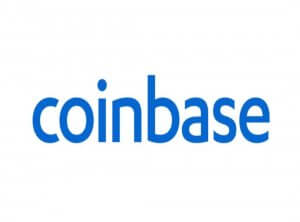This month, January 2021, bitcoin reached an unprecedented all-time high of more than $41,000. As expected, the meteoric rise in prices has had everyone talking about the future of bitcoin in the financial markets. For instance, the Morgan Stanley Investment Management chief global strategist has made some bold suggestions of bitcoin becoming a global reserve currency.
Bitcoin is attracting more attention this time, and it is logical to expect more discussions about where it’s headed.
Well, 2020 was a good year for bitcoin with a yearly gain of 303.5%, outperforming other major asset classes to justify its attention.
The force behind the 2017 bitcoin market hype was the emergence of speculative trading and initial coin offerings. In contrast, the 2020 bitcoin market showed signs of maturity with growing adoption and institutional demand, among other factors.
In this write-up, we compare and contrast the 2017 bitcoin bull run with that of 2020. What similarities are there between the two, and how do they differ? Let’s find out!
Similarities Between the 2017 and 2020 Bitcoin Bull Run
The crypto markets are ever-evolving, more so as the world comes to terms with the fact that digital currencies may be the future. Therefore, most digital currencies will probably undergo massive changes within a short time.
Despite a 3-year gap between the king coin’s major bull runs, there are certainly some similarities. Here’s a look at some of them.
A Strong Uptrend
Both the 2017 and 2020 bitcoin market demonstrated a solid uptrend, breaking any assumed resistances in the market. But what was this resistance?
The apparent resistance is currently set at $20,000. But as you are aware, the 2020 bull run went over it effortlessly to record a new high of over $41k.
Previously, the estimated trade volume was between $14 and 17,000, and the $20,000 was only a psychological block estimated using this trade volume and nothing more. There was no reason why the 2016 bitcoin market could not go over the $20,000 mark, and there is good reason to assume that the current market used it as a platform.
Away from the talk of market resistances, both bitcoin eras recorded solid performances.
Player Psychology
The player psychology remains unchanged through different eras.
The disbelief stage seems to be the current state, characterized by the majority of inexperienced market participants. As a result, any price rise is met by skepticism.
No doubt, there are differences between the 2017 and the 2020 market players, but the sentiments remain the same.
The outsiders’ perspective of the market is almost similar, with most of them generally skeptical and disbelieving. Still, there is a section of the outsiders that is curious and excited. This second group is most likely to enter the market and is waiting for funding and guidance to jump right in.
The second stage after disbelief is hope and recovery. Careful analysis of the 2017 and 2020 runs draws some similarities between the two phases of the market.
Google Trends
It is quite interesting that the rising bitcoin prices do not attract too much attention, and the associated cash flows from outside. Google trending is relatively low for the 2020 bull run, which is different from the 2017 levels.
Apparently, the market is still cautious like it was in 2017, even when the prices are high. The FOMO element is not entirely compelling, a stark contrast from other financial markets.
Such rising prices from other industries would have a different effect on Google trends, and the market would not be that careful.
Multi-level Marketing (MLM)
BTCV and other multi-level teams played an essential role in the 2019 – 2020 bitcoin run. This interest by the MLM teams indicates a few things about bitcoin.
For example, the bitcoin chart is relatively healthy, which applies for both the 2017 and the 2020 bull runs, and this oils the greed of individuals who want to make money quickly.
Despite the MLM backers’ intention, BTCV and other multi-level teams continue to play an essential role in the bitcoin market’s new capital injection. People in the MLM teams tend to invite their friends and relatives who bring in new money into the market.
Dissimilarities Between the Two Bull Runs
Undoubtedly, three years is quite a long time, and as is expected, certain aspects of the bull run aren’t entirely similar. Here’s a look at the significant differences.
Market Background
Perhaps the most significant difference between 2017 and 2020 runs is in the market background. A few years ago, there was no pandemic, and the world was not facing economic hardships.
There’s more.
While cryptocurrency is a legal dilemma in the US, it is taking a different shape in China. The Chinese government is showing support for blockchain and leading the way. It is only a matter of time before the neighboring countries take a similar path.
The big boys in the market, such as banking and Wall Street, are also throwing their hats in the crypto market ring. They employ technical analysis and work a lot better to determine the best course of action in bitcoin investment.
Clearly, the current cash flow is more knowledgeable and relatively smart than in the 2017 cryptocurrency market. Of course, shorting the market and other leverage concepts were still in use in the 2017 market, but not as effective. For some traders back then, it was like shooting in the dark, hoping to get something.
The smart cash flows can explain the volume of stablecoins in the larger current market. USDT capitalization is at its peak at more than $18 billion. Compare this figure to the 2016 tether capitalization of $2.2 billion; quite a significant difference.
Growing Adoption
The address analytics and network hash rate are some of the metrics you can employ to assess the bitcoin’s state. The processing power or the hash rate goes up as more miners increasingly use the network.
The 2020 hash rate is significantly higher than its 2017 predecessor, thereby highlighting improved stakeholder confidence. The hash rate in 2020 was an all-time high at 146 million. The early November mining difficulty was 19.99 trillion.
In contrast, the 2017 rate stood at 15.26 million, with a mining difficulty of 1.93 trillion. Some speculators expected the 2020 third reward halving and the resulting lowered profitability to shake investors’ confidence, but the opposite was true. The cryptocurrency experienced more growth to indicate more confidence in bitcoin’s longevity.
User growth in the bitcoin network can be seen in the growth of active addresses and the number of 1,000 BTC or more addresses.
After the 2017 bitcoin boom, the number of active addresses dropped to a certain level. They would continue to rise to 1.19 million in late 2020. Despite the excellent showing, the 2020 number did not close the 1.25 million all-time high in 2017. The network has not experienced fresh entrants, at least not in a similar way to 2017.
The 1,000 BTC or more grew to 2,275 in December 2020 from 1,600 in early 2018, that is according to statistics from Glassnode. This figure is the best indication of positive bitcoin value prospects and vote of confidence. It also indicates an accumulation of institutions and whales in the network to show significant benefits in the market to encourage them to stick around.
1,000 BTC or more addresses from 2017 to 2020 Source: Glassnode
Project Focus
Most of the 2016 – 2017 bitcoin season generally focused on drawing and applying blockchain technology. In contrast, the focus has shifted from finding a problem to finding a solution to the current issues.
The majority of projects in the 2016 period were on finding solutions to payments, while the current ones are two-pronged: infrastructure improvement and DeFi Development.
DeFi value is increasing and is one of the most distinguishing factors between the 2017 and the 2020 bull runs.
Binance and Stablecoins
The establishment of Binance and the emergence of stablecoins has made it a lot easier to obtain and trade in bitcoins, something you cannot say about the 2017 season.
Obtaining XRP, TRX and other Altcoins was as tricky as it can get. You could only get them through separate parties such as Remitano, Santienao, or the black market.
Institutional Demand
Strong institutional demand was the main propeller for the 2020 bitcoin bull run.
The signals of this demand are sizable investments from top financial organizations and massive growth in bitcoin whales. There is currently some competition between leading institutions to establish crypto services.
During the 2017 bitcoin boom, there was skepticism among top institutions about the crypto assets. Some of them, like JPMorgan Chase, repeatedly slammed bitcoin and caused a price slump that year.
Since then, big names such as MicroStrategy have changed their perspective about bitcoins, and in July 2020, they revealed a $250 million cryptocurrency purchase, with an additional $50 million that December. Others like Square Inc and MassMutual invested $50 million and $100 million respectively in October of the same year.
It does not seem like the revitalized institutional interest and demand in bitcoins is about to stop anytime soon, a stark contrast to the 2017 bull run. The demand growth is quite apparent among other segments such as institutional bitcoin whales and crypto funds.
Final Thoughts
It is not up for debate that the current bitcoin market is more mature and developed than its 2016-2017 counterpart.
Perhaps the current economic status, with coronavirus and austerity measures, is playing the financial markets to cryptocurrencies’ hands. Investors are generally looking for fiat alternatives to safeguard their wealth and income capability, and crypto-assets are somewhat living up to their expectations.
While the player sentiments and the market cycle for the 2017 and the 2020 bitcoin bull runs are similar, smart analysis methods and current knowledge of blockchain technology make all the difference for investors.
The 2016-2017 bitcoin bull run may have been driven by curious investors with a disposable income who wanted to see what comes out of it, and they were rewarded for it. Unlike the 2017 bull run, the 2020 bitcoin market is easy to navigate and transparent.






